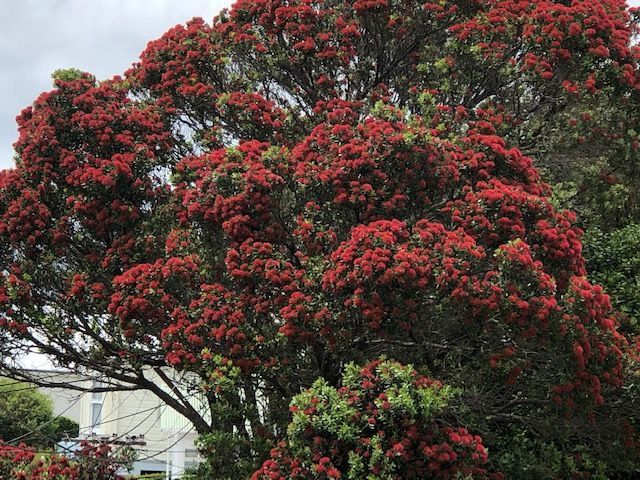Guardians of the Bays and Consultation
-
-

Wellington transport projects Consultation
- Guardians of the Bays
- Waka Kotahi- New Zealand Transport Agency has undertaken a very short public consultation on the proposed major Wellington transport project aka – a second Mt Victoria tunnel, a second Terrace tunnel and all the associated works https://nzta.
- Accepted from Guardians of the Bays posts by feedreader
- Tagged as:
- consultation
-
-
-
Invite to Public Webinars on Climate Change Consultation from He Pou a Rangi – Climate Change Commission
- Guardians of the Bays
- He Pou a Rangi, the Climate Change Commission, are consulting from 8 April to 31 May 2024 on the discussion document into whether emissions from international shipping and aviation should be included in the emissions reduction target. The results of the consultation will inform the Commission’s upcoming advice to the Government – due by the […]
- Accepted from Guardians of the Bays posts by feedreader
- Tagged as:
- consultation
-
-
-
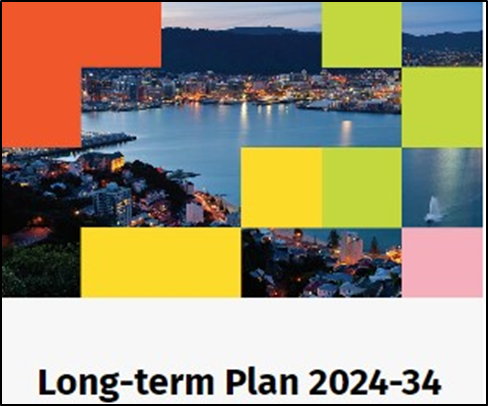
Wellington City Council’s Long Term Plan 2024-34
- Guardians of the Bays
- There is a month to give feedback on the Wellington City Long Term Plan 2024-34 as formal consultation is open till the 12 May 2024. In our last 2023 newsletter we asked you about your thoughts on the council’s ownership of Wellington Airport Shares. We had feedback from Guardians of the Bays members which ranged […]
- Accepted from Guardians of the Bays posts by feedreader
- Tagged as:
- consultation
- wellington-city-council
-
-
-
Invite to Public Webinars on Climate Change Consultation from He Pou a Rangi – Climate Change Commission
- Guardians of the Bays
- He Pou a Rangi, the Climate Change Commission, are consulting from 8 April to 31 May 2024 on the discussion document into whether emissions from international shipping and aviation should be included in the emissions reduction target. The results of the consultation will inform the Commission’s upcoming advice to the Government – due by the […]
- Accepted from Guardians of the Bays posts by feedreader
- Tagged as:
- consultation
-
-
-

Wellington City Council’s Long Term Plan 2024-34
- Guardians of the Bays
- There is a month to give feedback on the Wellington City Long Term Plan 2024-34 as formal consultation is open till the 12 May 2024. In our last 2023 newsletter we asked you about your thoughts on the council’s ownership of Wellington Airport Shares. We had feedback from Guardians of the Bays members which ranged […]
- Accepted from Guardians of the Bays posts by feedreader
- Tagged as:
- consultation
- wellington-city-council
-
-
-

Moa Point Sludge Minimisation Facility
- Guardians of the Bays
- Guardians of the Bays (GOTB) has made a neutral submission on the Notices of Requirement for the proposed Moa Point Sludge Minimisation Facility. A number of aspects of the application need to be improved with changes to the conditions of consent. GOTB members and supporters will have mixed views on the SMF proposal. While some […]
- Accepted from Guardians of the Bays posts by feedreader
- Tagged as:
- consultation
- sludge-minimisation-plant
Moa Point Wastewater Treatment Plant, Stewart Duff Drive, Moa Point, Wellington, Wellington City, Wellington, 6242, New Zealand (OpenStreetMap)
-
-
-
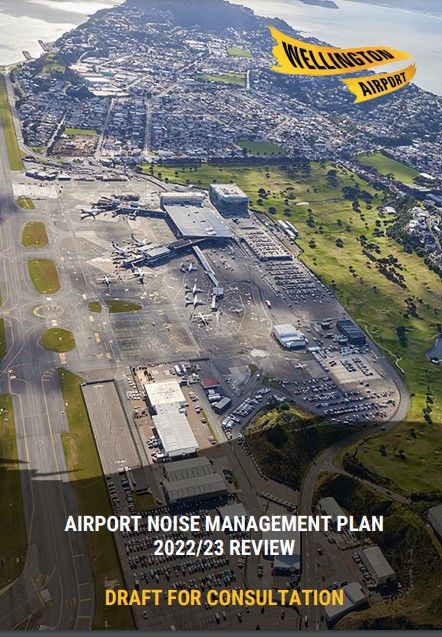
Consultation open for the Draft Airport Noise Management Plan 2022/23
- Guardians of the Bays
- Wellington International Airport Limited is currently consulting the community on our draft for consultation Airport Noise Management Plan (this is part of the Guardians of the Bays Wellington Airport designations Settlement Agreement).
- Accepted from Guardians of the Bays posts by feedreader
- Tagged as:
- consultation
- airport
Wellington International Airport, Coutts Street, Rongotai, Wellington, Wellington City, Wellington, 6023, New Zealand (OpenStreetMap)
-
-
-
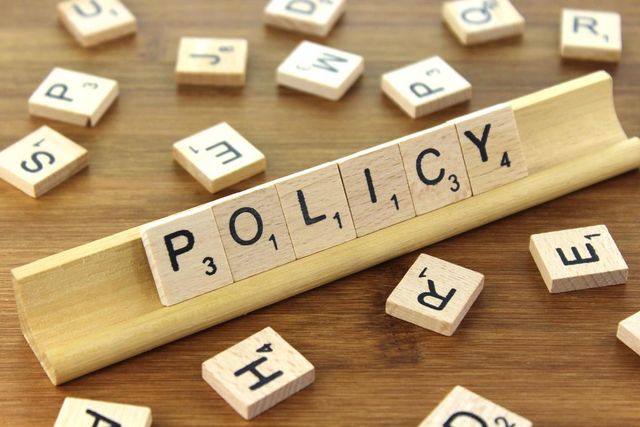
Quick Submission Guide on the Civil Aviation Bill 2021
- Guardians of the Bays
- This guide is prepared by Guardians of the Bays. We’re a community group set up to oppose Wellington Airport’s expansion plans. But all over the country, communities are facing more noise and more disruption from airports’ aggressive expansion plans – which are also making the climate emergency worse. The Government’s new Civil Aviation Bill could do […]
- Accepted from Guardians of the Bays posts by feedreader
- Tagged as:
- consultation
-
-
-

BLOG Guardians of the Bays: You can’t have a Low Carbon Capital AND a runway extension
- Guardians of the Bays
- Our Co-Chair, Dr Sea Rotmann, made an impassioned plea to the City Councillors during consultation on the WCC Low Carbon Capital Plan the other day: “Please start taking this seriously, climate change is a reality and it is hitting us hard already.
- Accepted from Guardians of the Bays posts
- Tagged as:
- runway-extension
- consultation
-
-
-
REBLOG Croaking Cassandra: Further thoughts on the airport Part 1
- Guardians of the Bays
- Shortly after the release of the cost-benefit analysis of the proposed Wellington airport runway extension, prepared by Sapere for Wellington International Airport Limited (WIAL) I wrote a post in which I posed the question “If they build it, what if no one comes?” Since that post, I’ve been to one of the open day/public consultation meetings, have read and thought about the documents more thoroughly, and have read various pieces written by others, including the new one by Ian Harrison that I linked to yesterday. I have also had some engagement with Sapere and WIAL, which has helped to sharpen my sense of what the issues really are. The cost-benefit analysis is not a business case document. It has been prepared in support of a resource consent application. What I hadn’t known when I wrote earlier (and was advised of by Sapere) is that under the RMA the applicants will need to be able to demonstrate national benefits to get permission to fill in some more of Lyall Bay, to extend the runway. I’m sure that the cost-benefit analysis is not serving as a business case for Infratil, the major shareholder in WIAL. But since this project is generally accepted to be viable only if there is significant public funding, and any such funding can only be defended if there would be material net public benefits , the Sapere cost-benefit analysis is by default serving as something of a business case at present. If the numbers don’t stack up, neither the Wellington region councils nor central government should be putting any money into the project (beyond WIAL’s resources, and of course Wellington City Council is a 34 per cent shareholder in WIAL). In this post, I will offer a few thoughts on the plausibility of the assumed increase in international passenger traffic to/from New Zealand as a result of the extension. Extending the runway at Wellington airport could materially reduce the cost of some forms of international travel in and out of Wellington. If long-haul flights were offered, lower costs could result by reducing the time taken (eg. by eliminating the one hour flight to Auckland and the stopover time in Auckland, it might reduce the total time for a trip to Singapore (and onward points) by perhaps 2.5 hours). For those travelling anyway, those gains could be material – time has an opportunity cost. In addition, by allowing long-haul aircraft to fly into Wellington, the direct cost of international airfares in and out of Wellington could also be expected to fall – quite materially, if the numbers Sapere quotes are correct. Those gains apply not just to long haul routes themselves – a Wellington-Singapore direct fare should be materially cheaper than the current options via Auckland, Christchurch or Sydney – but also to trans-Tasman flights, as the longer runway would also facilitate used of wide-bodied aircraft on trans-Tasman routes (as for examples, the Emirates flights between Christchurch and Australia). Of course, simply building the runway extension does not bring about any of these savings. They depend on airlines finding it profitable to run additional services. And although international air travel has increased enormously to and from New Zealand in recent decades, provincial New Zealand is littered with the dreams of local authorities (airport owners) with aspirations to have an international airport. New Zealand has plenty of attractive places, but one main international airport. Wellington, of course, has a significant business market, and business travel is typically much more profitable for airlines than leisure travel. And unlike the predominantly leisure travel into Christchurch, the Wellington business travel probably isn’t very seasonal. So the idea the long haul flights into Wellington could be viable isn’t self-evidently absurd. But, on the other hand, the economic cost of making such flights technically feasible – lengthening the runway – is far higher than in many other places. At $1m a metre, it is considerably more costly than putting some asphalt on some more grassy fields in Christchurch. Wellington isn’t a natural place for a long-haul international airport. The WIAL proposal uses modelling by international consultants to estimate likely growth in traffic and passenger numbers with and without the extension. There are some questions about the baseline forecast, including for example around the potential future impact of climate change mitigation policies. But my main interest is the difference between these two – the increase in traffic that would result from the runway extension itself. It is hard to pick one’s way through all the numbers, but the bottom line appears to be that the cost-benefit analysis is done on the basis that by 2060 there will be an additional 400000 foreign international passengers per annum arriving in Wellington, and an additional 200000 New Zealand international departures per annum through Wellington[1]. Many of these are people who would otherwise have travelled via Auckland or Christchurch, so that the net gain in international travel numbers to New Zealand is around 200000, with an additional 100000 or so New Zealanders travelling abroad. Many of the gains are forecast to occur early in the period. Thus, by 2035, the analysis assumes an annual net gain to New Zealand of around 125000 international visitors (relative to the no-extension baseline). How plausible is this? The various reports highlight the phenomenon of “market stimulation” – putting on new air services tends to stimulate total passenger numbers. That shouldn’t be surprising. Not only do point-to-point services lower the cost of visiting a particular place, but marketing expenditure raises awareness of the destinations concerned. On the other hand, one can’t just take for granted that such market stimulation will render long haul flights into and out of Wellington viable. After all, there are plenty of cities around the world with few or no long haul flights. Closer to home, Rotorua is an attractive tourist destination and can’t sustain direct flights even to Sydney. What of Wellington? The modelling exercise involves lowering the cost of foreigners visiting Wellington – to some extent artificially, because the costs of providing the longer runway are not passed back in additional charges to those using long haul flights – but not the cost of them visiting New Zealand (since Auckland and Christchurch fares would stay largely unchanged). Any long-haul flights into Wellington will almost certainly be from cities that already have flights to Auckland (and possibly to Christchurch). Is it really plausible that an additional 200000 people per annum (or even 125000 by 2035) will visit New Zealand simply because they can fly direct to Wellington, or (in respect of trans-Tasman traffic) fly into Wellington more cheaply than previously? Perhaps I’m excessively negative on Wellington. I reckon it is a nice place for a weekend, but not a destination that many long haul leisure travellers would choose. What is there to do after the first two days? And there is little or nothing else in the rest of the bottom of the North Island. So it is plausible that lower fares resulting from additional competition would attract more weekend visitors from Australia. But no one is going to come for a weekend in Wellington all the way from China or Los Angeles. And since the principal attractions of New Zealand are either in the upper North Island or the South Island, how many more people are likely to come to New Zealand just because they can choose Wellington as the gateway for their New Zealand holiday? And what of New Zealanders travelling abroad? Since the costs of Wellingtonians (and others in the nearby areas) getting to desirable destinations abroad would be cheaper if there were direct flights from Wellington, it is credible that the total number of New Zealand overseas travellers would increase. In fact, whereas the modelling suggests twice as many new foreign visitors as new New Zealand international travellers (and in total there are twice as many international visitors to New Zealand as travelling New Zealanders), in this case I wonder if the putative new routes would not be more attractive to New Zealanders than to foreigners? One can illustrate the point with a deliberately absurd example: put on long haul international flights to Palmerston North, and they would be quite attractive to people in Manawatu (much easier/cheaper to get to desirable places like New York or London) but not very attractive at all to foreigners (for whom Manawatu has few attractions). But even if wide-bodied aircraft flights from Wellington did make overseas travel more attractive to New Zealanders, is the effect really large enough to be equivalent to one more trip every year for every 10 people in Wellington and its hinterland? And would the effect still be remotely that large if passengers (users) had to cover the cost of providing the longer runway (which should really be the default option)? Reasonable people can differ on these issues. In my discussions, a lot seems to turn on just how attractive people think Wellington is. I’m pretty sceptical that long haul tourists will ever come to New Zealand to see cities. Perhaps if one is thinking of visiting New Zealand cities, Wellington is more attractive than our other cities, but even if so Wellington still has the feel of being a logical gateway to nowhere much. It isn’t an obvious starting point for a “whole of New Zealand” trip, or a North Island one (given that most of the attractions are further north), or a South Island one. So I’m left (a) sceptical that the net addition to visitor numbers to New Zealand will be as large as the analysis assumes even if the users don’t bear the costs, and (b) suspecting that the boost to the demand for New Zealanders to travel abroad might be greater than the boost to the demand for foreigners to visit New Zealand. On that latter point, the experts point out that they assume that the new long haul services will be provided by foreign airlines, and that the evidence of recent new air services to New Zealand provided by foreign airlines is that they disproportionately boost the number of foreigners travelling. I have no reason to doubt the numbers, but I still wonder if the same result would apply to routes into Wellington. New flights into Auckland are often the first direct flights offered into New Zealand (as a whole) from that city or country. My impression is that “New Zealand” is the destination marketed to long haul passengers. But direct flights to/from Wellington do more to open up the world (more cheaply) to Wellingtonians than they do to open New Zealand to foreigners. And if so, would the foreign airlines be keen to offer the Wellington services at all? This post has been about the sort of increased passenger numbers that might be expected if the runway was extended. In some sense, that should be largely an issue for WIAL. If they can extend their capacity and attract sufficient users at a price that covers the cost of capital of WIAL and its shareholders, the rest of us might not care much (I’m not much bothered about environmental issues, although my family enjoys the waves at Lyall Bay beach). But the cost-benefit analysis being used to lure ratepayers and taxpayers into funding much of the proposed expansion suggests that there are very large economic benefits to New Zealand which cannot be captured directly by airlines or airports. I think they are wrong, and my next post will explain why. [1] From tables 5.11 and 5.12 in the InterVISTAS report.
- Accepted from Guardians of the Bays posts
- Tagged as:
- consultation
- fares
- runway-extension
- lyall-bay
Lyall Bay, Wellington, Wellington City, Wellington, New Zealand/Aotearoa (OpenStreetMap)
-
-
-
WCC Long Term Plan Guardians of the Bays submission
- Guardians of the Bays
- This was our submission, which went into some depth as to the economic folly that this runway extension in its current form posed, as well as the issues related to the consultation process. GOTB LTP Submission FINAL
- Accepted
- Tagged as:
- runway-extension
- consultation
- wellington-city-council
-
-
-
Long Term Plan Optimism Bias, more Propaganda, and another Consultation Shambles
- Guardians of the Bays
- The Council isn’t known for its accuracy with figures.
- Accepted
- Tagged as:
- consultation
-
-
-
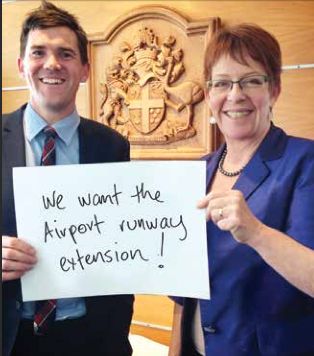
Keeping the Council and the Airport honest, or will Tangaroa have the last word anyway?
- Guardians of the Bays
- Over the last couple of months two important developments occurred regarding the proposed Wellington Airport Runway Extension: Its $90m co-funding by Council found its way into the LTP – despite significant opposition against it, but with some very important caveats Nature has shown us on several occasions just how insane the proposal is to put such vulnerable infrastructure into the Cook Strait. In addition, WIAL met with the directly affected residents of Moa Point to update them about the work they’re doing in relation to the airport extension. We will discuss these two points in separate blogs, so let’s have a look at how the Long-Term Plan consultation went first… Despite being touted as a great success by its proponents, with apparently only a ‘noisy minority’ of people opposing the $90m for the runway extension that was ring-fenced in the LTP, this really doesn’t stack up on closer scrutiny. Strathmore Park blog has written about this extensively, eg here, here and here, but it was clear during consultation that both the Council and WIAL got quite rattled once submitters started asking some difficult questions. The WIAL CEO went as far as swearing – twice! – during his oral submission when he commented on the report by NZIER reviewing EY’s economic impact statement that they prepared for BARNZ, the Board of Airline Representatives. However, upon reading the EY report’s full page of caveats it becomes very clear that the content cannot be relied upon as a fair representation of the truth, not that that stopped Justin Lester from insisting that ‘the numbers are sound’. When the Councillors were asked if they had actually seen any plans or designs so far for the $90m of ratepayer money they were willing to put forward, they looked on rather blankly. It is a sad indictment that you even have to ask a public official if they would pay a builder millions up-front for building their house without having seen any designs or plans, but as we suspected, the answer to that question was a resounding ‘no’. However, despite all of this, and the fact that the submission process may well have violated Section 93B under the Local Government Act as well as there being questions about whether the Mayor and Deputy Mayor fulfilled their own code of conduct in relation to giving at least the appearance of open-mindedness and independence during a public consultation process, the majority of Councillors signed off this mad plan to ring-fence almost $100m of our money for this ‘white elephant’ (according to John Key). On a very positive note, however, our and many other submitters’ strong objections did lead to some extremely important caveats and amendments being included. The LTP now says that the Council will make a final decision on this project and whether to commit funding to construction once: WIAL has obtained resource consent for the project The Council has received and considered a cost-benefit analysis and business case from WIAL that will be independently reviewed. Other key considerations that the Council has said will need to be considered before it makes its final decision relate to: The resilience of a runway extension to weather and climate change The proposed investment vehicle and any revenue agreement Satisfactory airline commitments Funding arrangements for construction and confirmed construction costs The governance and management structure to oversee construction. The Council has also said it will undertake further public consultation before making a final decision on whether to commit funding to construct the runway extension. It is our expectation that it won’t ever get that far as the business case simply won’t stack up, but at least we now have some protections in place to stop the Council from just gifting a private company several million dollars more on top of what ratepayers have already given without setting out some clear requirements first. By the way – to this date, it seems not a single report (other than the EY statement) or progress update has been received by Councillors from WIAL for the almost $3m they gifted the airport for undertaking the resource consent application (back in May 2013 and then again in December 2014), which may be a breach of contract. Presumably, the Mayor would have received updates during board meetings in her role as Director but it does not seem as if this information flowed on to the rest of the Council. This again raises the potential conflict of interest of the Mayor who sometimes seems to take her position as a WIAL Director more seriously than her mandate to the city and its ratepayers. Why has no one wondered about this lack of progress or at least started asking some hard questions before signing off the money in the draft LTP? All this makes it clear that it is really important to make sure that the Council will stick to what it has approved in the LTP in relation to the runway extension instead of rolling over again and doing WIAL’s bidding based on no more than one-sided, overly optimistic and inadequate information and PR spin. It is also really important that all, but especially the most severely affected residents, have a fair say during this process which to date has been intransparent and inadequate. So far, the involvement and conduct of the Council has not led us to believe that they are overly interested in due diligence but we hope that the new caveats will ensure that we are protected against pushing ahead with a project where the main benefit seems to go largely to the airport company, but the main costs, risks and impacts sit squarely on the ratepayers and residents.
- Accepted
- Tagged as:
- consultation
- runway-extension
-
-
-
WCC LTP ‘consultation’
- Guardians of the Bays
- Here was the online ‘consultation’ of the WCC for the runway extension as proposed in the LTP.
- Accepted
- Tagged as:
- runway-extension
- consultation
-
